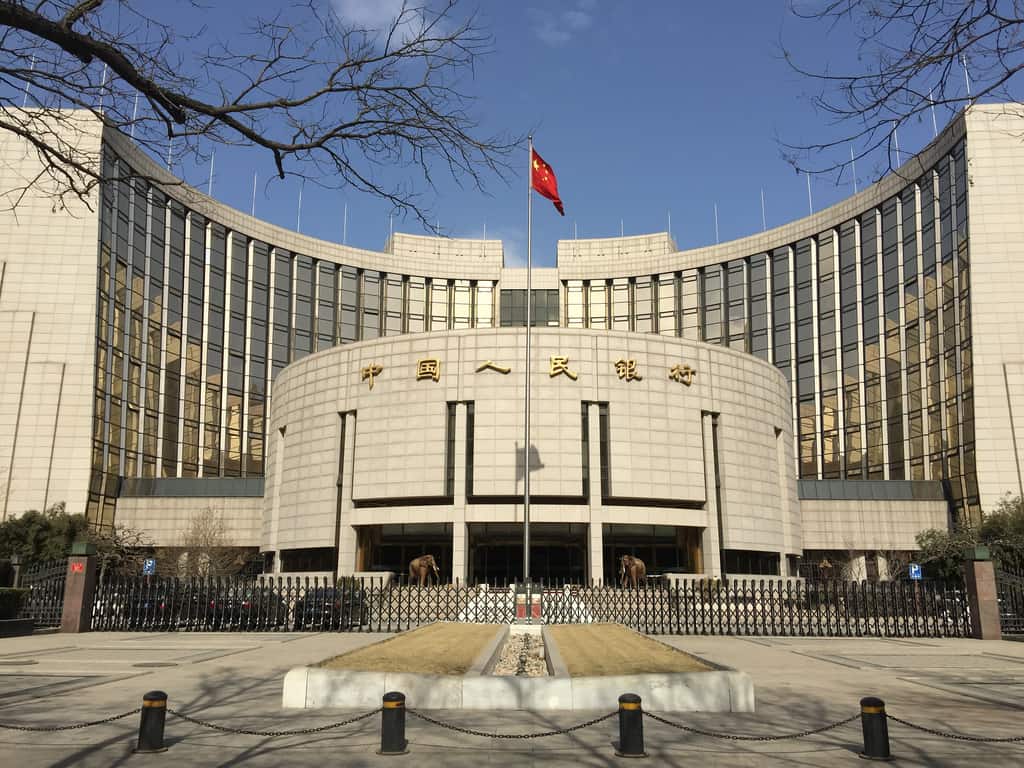The People’s Bank of China (PBOC) has reiterated its commitment to the prevention of systemic risk in the Chinese financial system in an article published on its official WeChat account.
The article published on 26 September entitled “Preventing and Dissolving Financial Risk, Improving Long-term Effective Mechanisms for Financial Stability” (防范化解金融风险 健全金融稳定长效机制), said that since the 19th National Congress of the Chinese Communist Party (CCP) in 2017, PBOC had “effectively prosecuted the war for the prevention and dissolution of major financial risk and continued to drive improvements to long-term effective mechanisms for financial stability.”
“[PBOC] has effectively dealt with severe and complex domestic and external conditions and the shock test of the Covid pandemic, maintaining financial stability and a secure development environment.
“It has operated an excellent secure and stable environment for the ongoing healthy development of the financial sector.”
Key accomplishments touted by PBOC included:
- Resolutely disposing of high-risk enterprises and high-risk financial institutions. These include risk and financial scandals involving Mingtian (明天), Anbang (安邦), Huaxin (华信) and Haihang Group (海航集团).
- Effectively squeezing out shadow banking risk. PBOC pointed out that as of June 2022, the share of net value asset management products stood at 87%, for an increase of 41 percentage points compared to the end of 2018, following reforms to the asset management sector to deal with shadow banking-related moral hazard.
- Comprehensively clearing out and organising the financial order. PBOC highlighted its specialist campaign to clean up risk in relation to Internet finance, with the complete closure of nearly 5000 P2P online lenders and ongoing efforts to stamp out domestic speculation in cryptocurrencies.
- Ongoing efforts to create a structurally rational, clearly tiered, differentiated and competitive system of financial institutions. PBOC pointed in particular to efforts to improve the capital standing and risk prevention capabilities of small and medium-sized banks, as well as efforts to ensure that financial institutions in China “effectively fulfil their role of supporting key areas of development and weak linkages for the national economy”
- Continually improving financial risk monitoring, assessment and early warning systems. Since 2017, PBOC has conducted quarterly assessments of around 4400 financial institutions, providing them with ratings of 1 to 10 and D based on corporate governance, asset management, liquidity risk and market risk.
- Implementing and improving the deposit insurance system. China has implemented a deposit insurance system since 2015, following the release of the “Deposit Insurance Regulations” (存款保险条例). As of June 2022 the system had a total of 4018 participants.
- The establishment of a financial stability protection fund (金融稳定保障基金). Since the start of 2022 PBOC has worked with other departments to accelerate the establishment of a financial stability protection fund. The fund will be under the control of the Chinese central government, and employed for the purpose of dealing with major financial risk with capital provided by financial institutions, financial infrastructure providers and other market actors. According to PBOC, the basic framework for the fund has already been established, with a volume of contributions already in place.
- Making up for shortcomings in the financial stabilisation system. This has included strengthening PBOC’s responsibilities with regard to macro-prudential regulation and systemic financial risk prevention; undertaking comprehensive financial sector statistics, and unveiling systemic documentation to strengthen the regulation of financial holding companies and systemically important financial institutions.
Chinese finance remains heavily dominated by banking, with banking sector assets accounting for over 90% of all of China’s financial sector assets. For this reason PBOC argues that “if the banking sector is stable then finance is stable” (银行稳则金融稳).
As of the end of 2021, banking assets falling within PBOC’s safety threshold of assessment (grades 1 to 7) accounted for 98.9% of all banking sector assets, while healthy large-scale commercial banks accounted for over 70% of such assets.
PBOC said that the next step would be for it to “further consolidate the foundations for stable financial operations, and firmly guard the baseline against the onset of systemic financial risk,” with key focal points to include:
- Continuing to dissolve the risk of key enterprise groups and financial institutions based on established plans and category-based policy implementation.
- Further driving the deepening of financial institution reforms and improving corporate governance structures.
- Driving increase to the effectiveness of regulation, continuing to implement prudential regulation and behavioural regulation of the financial sector, and strengthening protections for consumers and investors.
- Combining “curing the sick” and “preventing illness”, with improvements to risk prevention, early warning, disposal and accountability systems.


